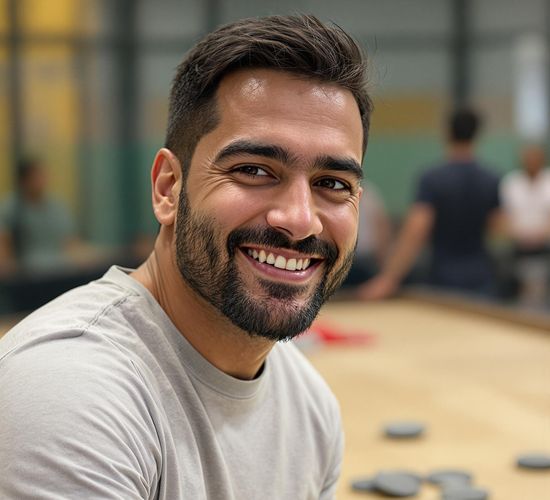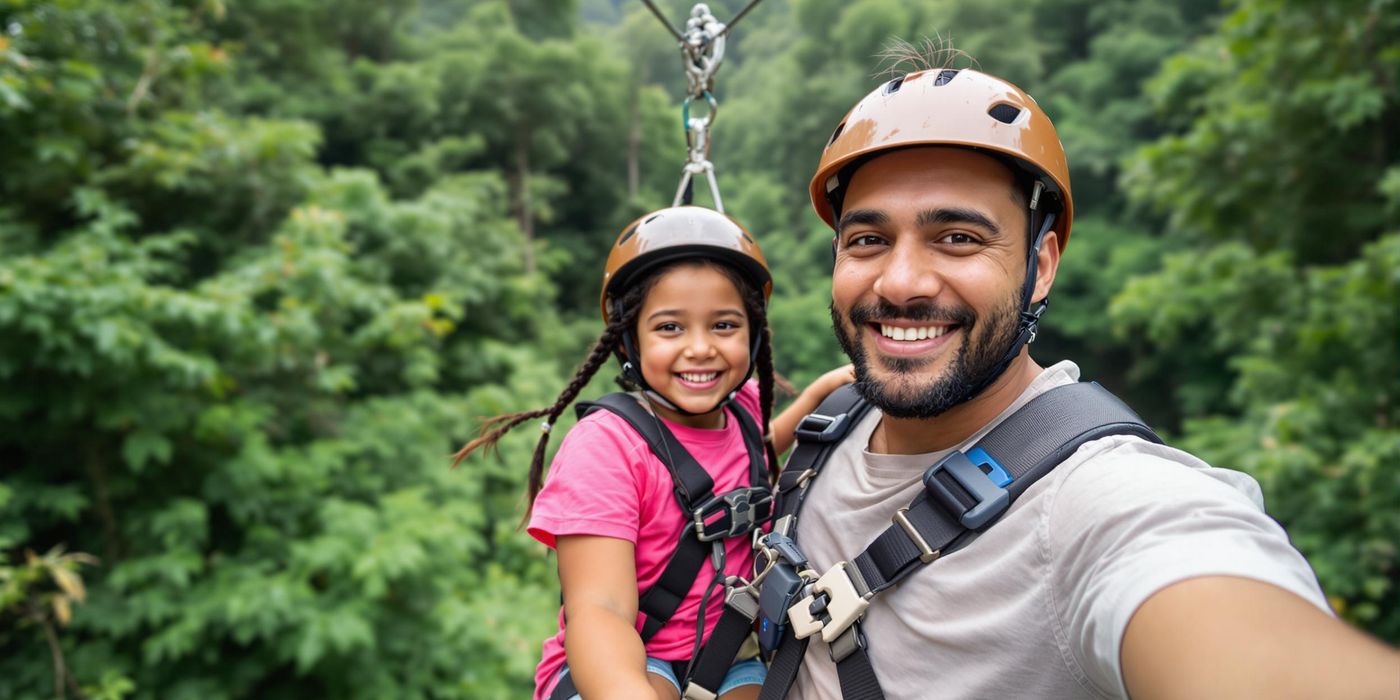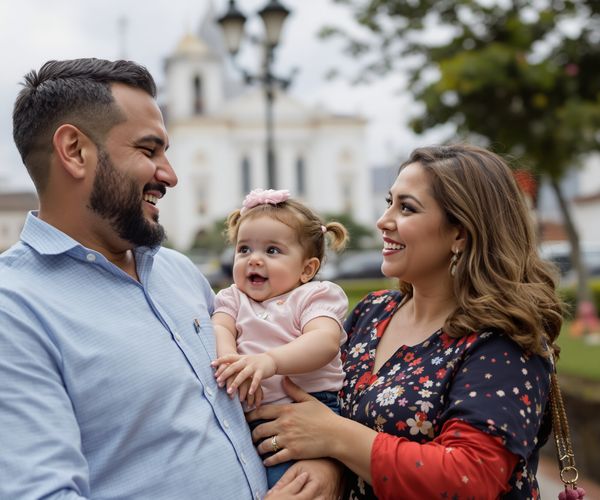As a dad, I've learned that travel isn't just about seeing new places; it's about creating lasting memories with my family. And what better way to make those memories even richer than by involving my daughter, Sofia, in the planning process? Over the years, I've discovered that including her in our travel preparations not only makes our trips more enjoyable but also teaches her valuable life skills. Let me share some insights on how you can make travel a family affair from the very beginning.
The Benefits of Family Collaboration in Travel Planning
Involving children in travel planning offers a multitude of advantages. First and foremost, it dramatically increases their excitement and anticipation for the trip. When Sofia helps choose our destinations or activities, she becomes genuinely invested in the journey. This excitement is contagious, making the entire family more enthusiastic about the adventure ahead.
Beyond the excitement, it also teaches valuable life skills. From researching destinations to comparing prices, children learn about decision-making, budgeting, and time management. These are skills that will benefit them throughout their lives, and what better way to learn than through the fun and engaging context of travel?
Furthermore, involving kids fosters a sense of responsibility and ownership in the travel experience. When Sofia is responsible for packing her own backpack or navigating us using a map, she feels a sense of pride and accomplishment. It also leads to more adaptable and flexible travelers. When kids understand the planning process, they are better equipped to handle unexpected changes or challenges that may arise during the trip. And let's not forget the educational benefits! Travel planning provides opportunities to learn about different cultures, geography, and history, making it a truly enriching experience.
Setting the Stage: Establishing Parameters and Expectations
Before diving into the planning process with your kids, it's essential to set some initial parameters. This involves parents establishing a budget and general destination ideas before involving the little ones. This ensures that the planning stays within realistic boundaries and prevents potential disappointments later on.
The key is to present these parameters to children in an engaging and age-appropriate manner. For example, instead of simply stating the budget, you could turn it into a fun challenge: “We have this much money to spend on activities. Let’s see how we can make the most of it!” It’s also crucial to have open communication and clear expectations about what aspects of the trip kids can influence. Can they choose the specific activities? Can they help select the hotel? Make sure they understand the scope of their involvement.
Managing expectations is also crucial. Not every idea will be feasible, and it's important to prepare for potential disappointments. When Sofia suggests an activity that's beyond our budget or logistically challenging, we explain the reasons why and try to find alternative options that still align with her interests.
Engaging Activities for Different Age Groups
The best way to involve kids in travel planning is to assign age-appropriate activities. Here are some ideas that have worked well for us:
- For younger children (ages 5-8): Let them choose activities from a pre-selected list. They can also help pack their own bags (with supervision, of course!) or draw pictures of what they expect to see during the trip. Sofia, when she was younger, loved drawing pictures of the animals she hoped to see on our trip to the Amazon.
- For older children (ages 9-12): Encourage them to research destinations, compare accommodation options, or plan a day's itinerary. When we were planning our trip to Quebec City, Sofia spent hours researching the historical sites and creating a walking tour for us.
- For teenagers (ages 13+): Give them more responsibility, such as managing a portion of the travel budget, booking activities, or navigating transportation options. This not only helps them develop valuable skills but also gives them a sense of independence and ownership.
Tools and Resources for Kid-Friendly Planning
Fortunately, there are numerous tools and resources available to help kids research destinations and plan activities. Websites like National Geographic Kids and Lonely Planet Kids offer kid-friendly information about different countries and cultures. Travel apps like TripAdvisor and Google Maps can also be valuable resources for older children and teenagers.
Don't underestimate the power of traditional tools like maps, globes, and travel guides. These can make the planning process more visual and interactive. We often spread out a map of our destination on the floor and let Sofia trace our route with her finger. Educational games or apps that teach about different cultures, geography, and travel-related skills can also be a fun and engaging way to get kids involved. Collaborative online documents, like Google Docs, are great for sharing ideas and creating itineraries together. Everyone can contribute their thoughts and suggestions in real-time, making it a truly collaborative experience.
Real-Life Examples: Our Family's Planning Adventures
One of my favorite memories is from our trip to Costa Rica a few years ago. Sofia, who was eight at the time, was responsible for choosing our rainforest adventure. She spent weeks researching different options and ultimately decided on a ziplining tour. At first, Isabella and I were a bit hesitant – we weren't sure if it would be too scary for her. But Sofia was adamant, and we decided to trust her judgment. It turned out to be the highlight of our trip! Sofia was fearless, and we were so proud of her for stepping outside of her comfort zone.
Of course, there have been challenges along the way. Sometimes Sofia's ideas are a bit too ambitious or don't quite align with our budget. But we've learned to approach these situations with patience and understanding. We try to find compromises that still incorporate her interests while staying within our limitations. The key is to be flexible and adaptable. Travel plans are rarely set in stone, and sometimes the best experiences come from unexpected detours.
Making it Fun: Gamifying the Planning Process
To make travel planning even more engaging, try turning it into a game or a challenge. Create a points system for completing planning tasks, with rewards for reaching certain milestones. For example, researching a specific landmark could earn 10 points, while comparing hotel prices could earn 15 points. The rewards could be anything from choosing the restaurant for dinner to picking out a souvenir.
Another fun idea is to create a “travel planning scavenger hunt,” where kids research specific information about their destination. This could involve finding out the capital city, the local currency, or the most popular dish. You can also use quizzes or trivia games to test their knowledge about the places they'll be visiting. For example, before our trip to Paris, we played a trivia game about French history and culture. Sofia loved learning about the Eiffel Tower and the Louvre Museum.
Finally, encourage creative projects like making a travel journal or scrapbook to document the planning process. This is a great way for kids to express their excitement and anticipation for the trip. They can draw pictures, write stories, and collect mementos along the way. These journals will become treasured keepsakes that they can look back on for years to come.
Learn how to engage your children in the travel planning process to make your trips more enjoyable for everyone. Discover tips and tricks from a seasoned traveler dad.









